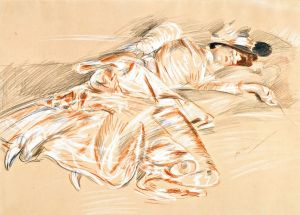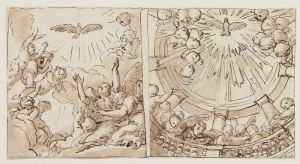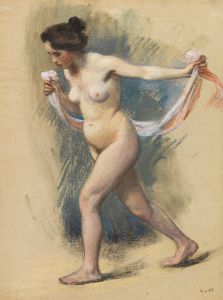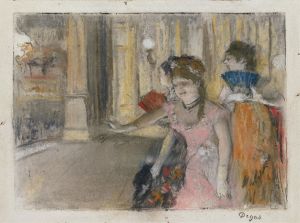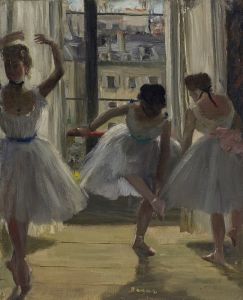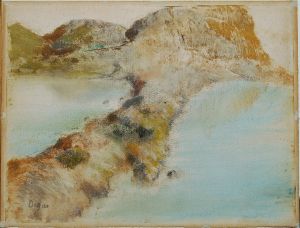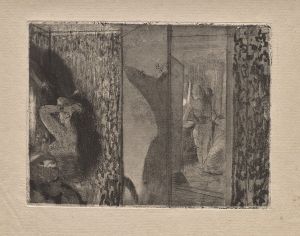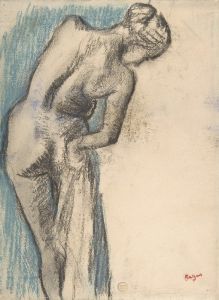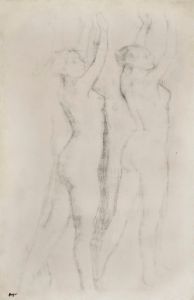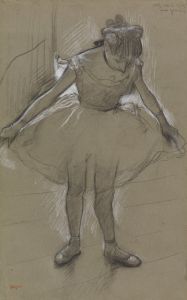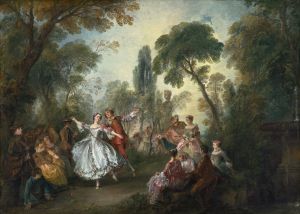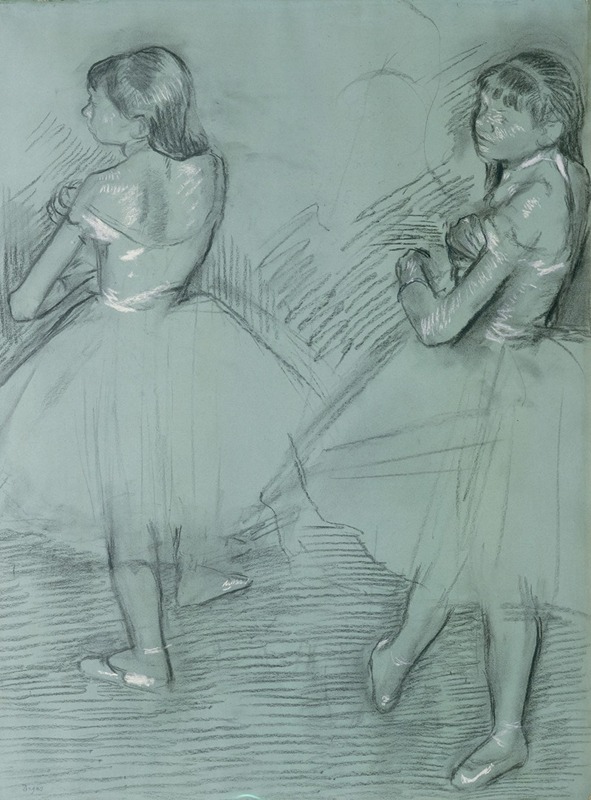
Two Dancers
A hand-painted replica of Edgar Degas’s masterpiece Two Dancers, meticulously crafted by professional artists to capture the true essence of the original. Each piece is created with museum-quality canvas and rare mineral pigments, carefully painted by experienced artists with delicate brushstrokes and rich, layered colors to perfectly recreate the texture of the original artwork. Unlike machine-printed reproductions, this hand-painted version brings the painting to life, infused with the artist’s emotions and skill in every stroke. Whether for personal collection or home decoration, it instantly elevates the artistic atmosphere of any space.
Edgar Degas's Two Dancers is a celebrated pastel artwork that exemplifies the artist's fascination with the world of ballet and his mastery of capturing movement and form. Degas, a prominent figure in the Impressionist movement, is renowned for his depictions of dancers, which make up a significant portion of his artistic output. Created in the late 19th century, Two Dancers reflects Degas's deep interest in the human figure, particularly in the context of performance and rehearsal.
The artwork portrays two ballet dancers in a moment of rest or preparation, a theme that recurs frequently in Degas's work. Rather than focusing on the grandeur of performance, Degas often chose to depict the behind-the-scenes moments of the ballet world, offering an intimate and realistic view of the dancers' lives. In Two Dancers, the figures are rendered with fluidity and precision, showcasing Degas's skill in using pastels to create texture, depth, and movement. The composition emphasizes the physicality of the dancers, highlighting their poses and the interplay of light and shadow on their bodies.
Degas's use of pastels in this piece is particularly noteworthy. By the time he created Two Dancers, he had developed a distinctive technique that involved layering and blending colors to achieve a rich, vibrant surface. This approach allowed him to capture the delicate textures of the dancers' costumes and the subtle nuances of their skin tones. The background is often less detailed, drawing attention to the figures and their dynamic poses.
The subject matter of Two Dancers aligns with Degas's broader interest in modern life and his desire to depict contemporary scenes. Ballet, as a popular art form in 19th-century Paris, provided him with a wealth of inspiration. Degas frequently attended performances and rehearsals at the Paris Opéra, where he observed dancers in various stages of practice and performance. His works often reveal the discipline, effort, and sometimes the fatigue of the dancers, offering a more nuanced portrayal than the idealized images commonly associated with ballet.
While the exact date of creation for Two Dancers is not always specified, it is generally placed within the later decades of Degas's career, when he increasingly relied on pastels as his primary medium. This period also saw Degas experimenting with more daring compositions and color palettes, as well as a focus on capturing fleeting moments of movement and emotion.
Today, Two Dancers is recognized as a quintessential example of Degas's ability to combine technical skill with a deep understanding of his subjects. The artwork is housed in various collections and exhibitions, depending on the specific version, as Degas often revisited similar themes and compositions throughout his career.





